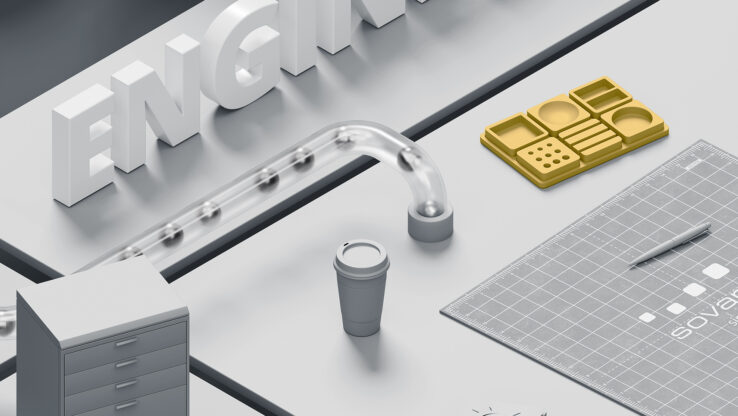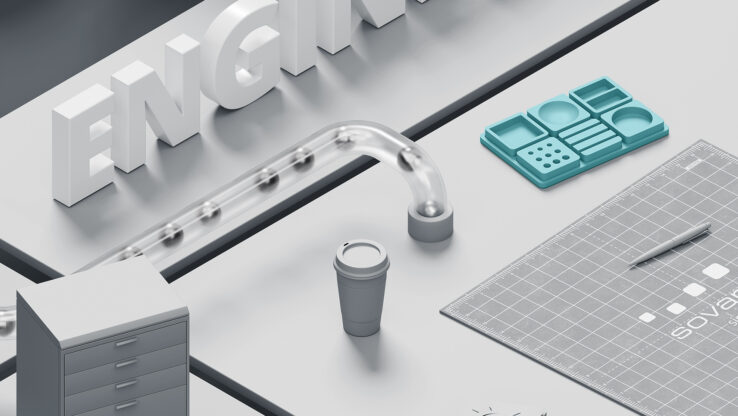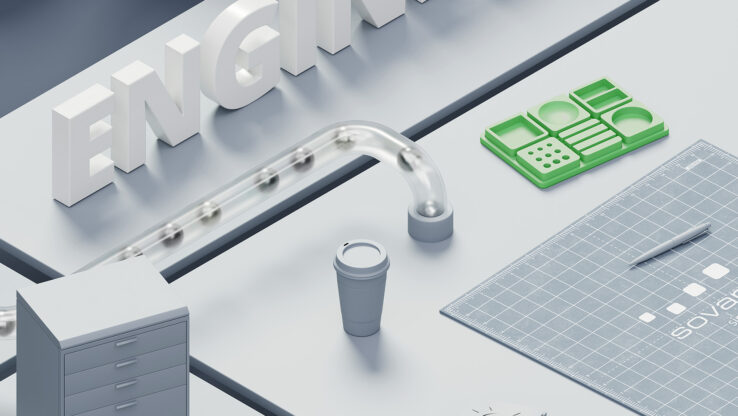
How Artificial Intelligence transforms UX Design
The interface between Artificial Intelligence (AI) and User Experience (UX) is gaining significance in the field of digital design. UX designers are faced with the challenge of not only viewing AI as a tool but as an integrated component of creative processes. AI tools offer two exciting perspectives for UX designers: firstly, they alter the interaction between users and applications, and secondly, they optimize their own design processes. However, what challenges await us in the use of AI? What opportunities and limitations arise? And perhaps the most crucial question: Can AI ever completely replace the role of the UX designer? Svenja Spannnagel, UX Designerin at sovanta, takes us into the world of AI & Design.
Evolution of the User Interfaces
For over 60 years, we interacted with computers through sequential commands: we put in a command, the computer executes it. We put in the next command, and the computer executes that too. User and computer take turns, one command after another. This paradigm has been dominant in the world of computers, whether in the command era of DOS or on our modern smartphones. A significant advantage is that after each command, the user can reassess the situation and adjust their commands. The user doesn’t even need to have a precise goal in mind because they can approach the solution gradually.
Today, we often communicate to AI systems with just a sentence, stating what result we want. However, we don’t specify the exact commands or steps the computer should take to achieve it. Instead of witnessing step-by-step progress, we only see the generated result. In the best-case scenario, this result will meet our satisfaction. However, in most cases, further adjustments are needed to refine the outcome.
Interaction with AI: The refinement from UX perspective
Now, from a UX perspective, things get interesting: These rounds of gradual refinement must, in turn, occur through interactions. However, these conventional tools provide little support for this. Of course, one can refine an AI-generated result using additional prompts, but anyone who has done this knows how tedious it can be. Expressing yourself correctly is often not as easy. As Jakob Nielsen, one of the most significant UX researchers, said: “Do what I mean, not what I say.” So, instead of potentially engaging in a dialogue with the AI where miscommunication can occur, it’s easier to resort to clear and unambiguous commands. Traditional UI elements excel at facilitating this.
An example:
Let’s say you want to generate an image of a sunset. The AI system produces an image, but it doesn’t quite match your vision – the sky doesn’t have the desired colors. Now you have to specify, for instance: “Add more orange and red to the sky.” The AI tool adjusts the image, but you’re still not satisfied with the colors – now it’s become too red. Instead of falling into the dialogue loop described earlier, a simple slider to adjust the color palettes for the sky would be a straightforward solution. The immediate advantage is clear: As the user operates the slider, the changes become visible on the generated image.
Efficiency enhancement in UX: How AI Tools transform the Design Process
Die Herausforderung einer guten User Experience wird in zukünftigen AI-Tools also auch in der Verschmelzung beider Paradigmen liegen. Gerade in Business Applikationen, in denen ein effektives und effizientes Arbeiten wichtig ist, werden UI-Elemente innerhalb von AI-Tools weiterhin eine wichtige Rolle spielen, da sie einfach und intuitiv zu bedienen sind. Die Unternehmen, die jetzt in User Research investieren, um hybride Benutzerschnittstellen mit einer hohen Usability zu entwickeln, werden zukünftig einen klaren Wettbewerbsvorteil haben.
The challenge for a good user experience in future AI tools will lie in the fusion of both paradigms. Especially in business applications where effective and efficient work is crucial, UI elements within AI tools will continue to play a significant role because they are easy and intuitive to use. Companies that invest in user research now to develop hybrid user interfaces with high usability will have a clear competitive advantage in the future.
The good news: AI tools can also support us in these areas and even enhance the productivity and quality of UX work. However, the effectiveness depends on the phase of the design or development process.
- In the Requirements Engineering Process: When conducting user interviews, ChatGPT can be very helpful in creating and refining interview questions.
- As a Brainstorming Buddy: Here, AI tools can generate numerous ideas in a short time, often having the same or even better potential than our own.
- Automating Tasks: For tasks like transcription and synthesis of interviews, AI tools such as NEXT or User Evaluation can be a blessing. They efficiently handle the otherwise time-consuming and tedious work of audio transcription within a few minutes.
- In the Design and Prototyping Phase: During this phase, mockups can be generated at the click of a button using tools like Galileo AI or uizard. Lorem ipsum texts are a thing of the past, and dull stock images are long gone thanks to Midjourney.
Do we even need UX Designer in the future?
The answer is a clear yes because AI can’t solve all of our UX problems. There is not one perfect AI solution. Certainly, AI tools can support UX designers in their process, but it is still the responsibility of the UX designer to choose the appropriate AI tool based on the use case. Even when the right tool is used, the results often cannot be directly adopted. In most cases, the generated output needs to be reviewed, revised, or refined. And only UX professionals can do this because they are the experts.
As a UX designer, for instance, when generating interview questions through ChatGPT, I must decide which of the available questions are actually correct and essential. When transcribing interviews using an AI, I still need to proofread the text and verify its substantive accuracy. Often, a downside of AI becomes apparent in this process: it starts to hallucinate. It can be dangerously convincing. The extent of this danger is exemplified by tools like Synthetic Users, where instead of real users, only an AI is queried. While the results may not provide deep insights into the behavior or motivations of the target audience, as the AI was trained on data likely not entirely representative of the users, in the worst case, harmful stereotypes can be generated.
Conclusion: The combination of human skills and AI is key
Therefore, it remains crucial to focus on a user-centric toolkit and continue engaging with real users. Soft skills and an understanding of human emotions continue to hold significant value, and in these aspects, humans still outperform computer systems. AI tools can provide us with a wealth of ideas that we should seek in, for example, a usability test, but they cannot predict what users will actually do. After all, humans are inherently unpredictable beings. AI will always be a partial solution, significantly enhancing our efficiency and productivity as UX designers. This is wonderful because the demand for UX work is substantial, especially in the realm of business applications within the SAP environment.




